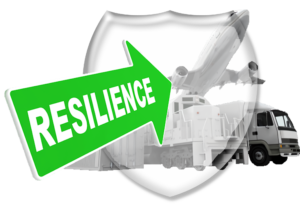Mark Safranski at ZenPundit responds to our post on resilience and organizational culture with these provocative thoughts:
…overlapping levels of resilience will be highly beneficial.
An organization with a resilient culture will help its employees or members become more resilient themselves by providing a shared “cognitive template” or schema that encourages the practice of resilient behaviors, which with time, may become internalized. Conversely, psychological resiliency among key personnel – the leaders and “hubs” of the organization’s social network – are indispensable in building a coherent organization from the ground up or weathering a severe crisis. Resilient leadership operating in a resilient organizational culture are apt to be synergistically reinforcing and, therefore, likelier to pass on the institution and its mores to successive generations.
How many generations ? If you think of corporations, states and organized religions in terms of their formal structures, the timeline now runs into centuries. In a few cases, thousands of years.
Now that’s what I call being resilient.
Yes. A resilient technology architecture can help promote and advance organizational resilience — but not in the absence of an organizational willingness to be resilient. A technology architecture can provide for information-sharing across organizational silos — and can even facilitate information sharing by automating the rules that govern how information flows from one department to another. But the organization becomes truly resilient when its leaders, managers and staff are willing to reach across those departmental lines themselves — when they collaborate to bring all of the organization’s resources to bear on the threat or the opportunity. Technology supports resilience — but true resilience also requires cultural and psychological comfort, as well as intensive training in the operation of resilient systems. Resilience requires a constant interplay between technological and human factors, with each reinforcing the other.
In the past, we’ve described resilience as the ability — of an individual, or an organization, or a nation state, or a trans-national system — to draw on all available resources in the face of a challenge. There is clearly a cultural component to this. Londoners were resilient in the face of the Underground bombings — and New Yorkers were resilient in the face of the September 11 attacks — in some measure because of a shared culture and heritage that they could draw on. They knew how to think about the challenge and how to rise to meet it. The same can hold true in an organizational setting — the people in a resilient organization know how to respond, have access to systems that support resilience, and know how to use them. Culture, technology and training all play critical roles. Resilient technology solutions are essential — but so is the cultural and psychological ability of the organization to use those solutions to maximum advantage.




